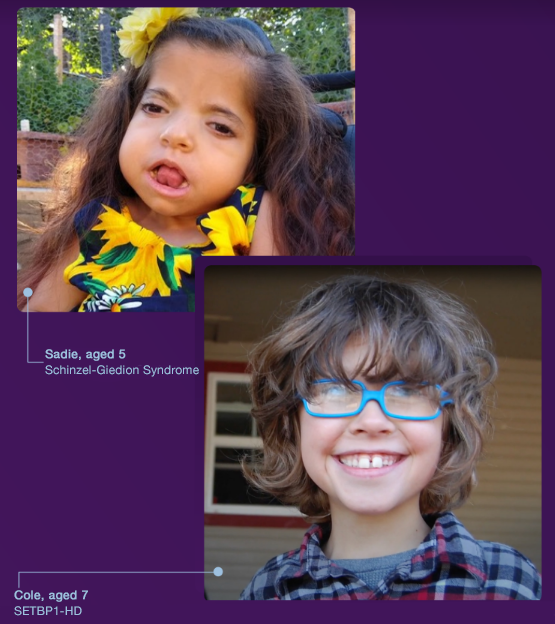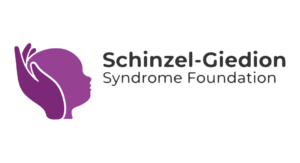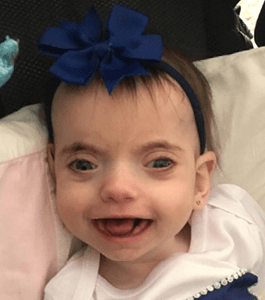
For Parents
WHAT IS SETBP1?
The SETBP1 gene is located on the long (q) arm of chromosome 18 at position 12.3. This gene contains the instructions to produce SETBP1 protein. The protein is shown to be active in numerous tissues, predominantly in the brain. This suggests that changes involving this gene may impact the development and/or function of brain cells.
SETBP1 is a DNA-binding protein that forms part of a group of proteins that act together on histone methylation to make chromatin more accessible and regulate gene expression. There is still more to learn about the overall function of the SETBP1 protein and more research is necessary.
Two distinct classes of mutations in the SETBP1 gene are recognized. These are loss of function mutations and gain of function mutations. Loss of function mutations lead to a decreased amount of the SETBP1 protein being produced are associated with SETBP1 Haploinsufficiency Disorder (SETBP1-HD). Gain of function mutations of SETBP1 lead to an accumulation of SETBP1 protein within cells and cause Schinzel-Giedion Syndrome (SGS).
Learn More About:
What is Schinzel-Giedion Syndrome?
Overview:
Schinzel-Giedion Syndrome (SGS) is a very rare genetic disorder arising from de novo germline mutations in the SETBP1 gene. De novo mutations are spontaneous mutations and occur where the family has no history of the disorder. Approximately 100 children have been diagnosed with SGS worldwide.
SGS is caused by mutations occurring in a specific ‘hotspot’ region of the SETBP1 gene that codes for a degron. The degron is an important component of a protein molecule, as it regulates protein degradation rates (i.e. speed of protein breakdown) in the cells.
Protein degradation prevents old protein molecules from accumulating in cells and causing ‘toxicity’. In a normal situation, the amount of SETBP1 protein in cells is tightly controlled by constant formation of new protein and breakdown / degradation of old protein.
Therefore it follows that as a consequence of the type of mutations that cause SGS (i.e. mutations affecting the degron), the SETBP1 protein levels build up in the cells because the protein is not able to be broken down. This is called a ‘gain of function’ mutation of SETBP1.
It is thought that the increased SETBP1 protein levels result in disruption of normal embryonic development in a number of different organs including the brain, where the protein build-up is thought to have a harmful effect on the normal development and function of neurons (brain cells). This is important as children with SGS have severe neurodevelopmental delay and seizures as prominent features.
Although not all individuals with SGS will exhibit all of the following symptoms, recognized features of SGS include:
- Seizures which are often severe and difficult to control medically
- Severe intellectual disability and neurodevelopmental delay
- Characteristic facial features (including prominent forehead, retracted and shortened midface, prominent cheeks, prominent eyes, small nose and chin, large mouth, protruding tongue, low set ears, short neck)
- Small head (microcephaly)
- Kidney / bladder problems leading to recurrent urinary tract infections
- Feeding problems (inability to breast / bottle feed effectively, which typically results in children needing naso-gastric tube or gastrostomy tube placement)
- Gastrointestinal problems (including reflux and constipation)
- Breathing problems leading to recurrent pneumonia
- Heart problems
- Vision impairment
- Reduced or complete lack of tears (alacrima)
- Hearing impairment
- Sleep disturbance
- Cancer (typically solid tumours as the base of the spine, but a few cases of leukaemia have been reported)
- Recurrent pneumonia
- Atrial septal defects
- Cortical visual impairment (CVI)
Meet some children with Schinzel-Giedion Syndrome (SGS):
Relevant References:
- Acuna-Hidalgo R, Deriziotis P, Steehouwer M, et al. Overlapping SETBP1 gain-of function mutations in Schinzel-Giedion Syndrome and hematologic malignancies. PLOS Genetics 13(3) e1006683
- Piazza R, Magistroni V, Redaelli S, et al. SETBP1 induces transcription of a network of development genes by acting as an epigenetic hub. Nat Comm 2018;9:2192
- Hoischen A, van Bon B, Gilissen et al. De novo mutations of SETBP1 cause Schinzel-Giedion syndrome. Nature Genetics 2010;42(6): 483-485
Find Out More:

Please visit www.sgsfoundation.org
Or contact Nuala Summerfield, Founder and Chair of The Schinzel-Giedion Syndrome Foundation at nuala@sgsfoundation.org.



